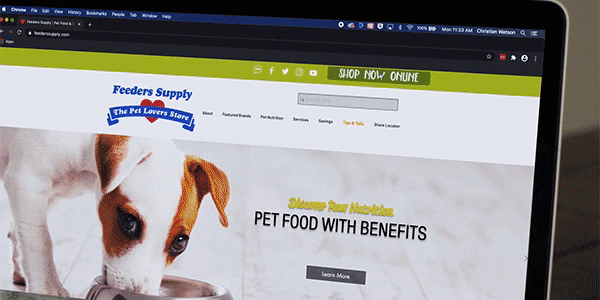
Direct-to-consumer brands
Maybe also the most misunderstood.
Some folks still believe that only a brand born on the internet can succeed in DTC. But as these three examples of long-established brick-and-mortar brands (that just happen to all be Doe-Anderson clients) will demonstrate, just about any brand with a great story to tell and the right communications and tech partners (hint, hint) can play the DTC strategy card and win.

First up: Carrier
As in heating and air conditioning. It doesn’t get much more brick and mortar than that.
Carrier has long relied on its network of distributors and dealers to carry its flag with consumers. But when the pandemic hit, how could it still find a way into consumers’ homes?
The answer was to capitalize on Americans’ sudden, intense interest in indoor air quality, leveraging Carrier expertise and knowledge with products they could purchase directly.
We developed messaging, as well as imagery and video assets – all on COVID-19 timelines.
We created digital display, SEM and placements on Facebook and IG to drive consumers to the Carrier website. Meanwhile, our digital strategy and analytics teams collaborated with Carrier’s web development resource, optimizing the Carrier site to streamline the shopping experience.
We also established performance metrics and an always-on dashboard to help Carrier understand how the site was performing.
We even designed product packaging to extend the customer experience into the home.
The results:
Over 36 million impressions and 100,000 site visits in the first few months.
Not only adding another dimension to Carrier’s expertise in the minds of its customers, but also showing Carrier a new, exciting way to talk and sell to them.

Next: Feeders Pet Supply
This hometown favorite has been offering local love for all our favorite furry and feathered friends since 1958, growing to a total of 46 outlets in cities across four midwestern states.
Pre-COVID-19, Feeders had been casually considering the potential of e-commerce through its existing website. But in March of last year, direct-to-consumer marketing became an immediate priority.
So we pounced on the opportunity.
Within the space of a few weeks, we developed an updated brand strategy designed to compete with the established and much larger e-commerce leaders in the category, as well as a targeted, trackable media and analytics plan customized by market that expanded beyond the client’s digital comfort zone into broadcast and out of home.
We supplemented the buy with SEM focused on turning awareness into site visits and purchases.
Our focus on local expertise and fast delivery gave us a leg up against bigger competitors that couldn’t get product to the customer as quickly. We also set up an analytics dashboard to track both paid and organic activity across SEM, programmatic, social and online audio.
We created custom codes to track purchases and show what was driving them. And we tracked foot traffic along with online purchases to gain a holistic understanding of campaign effectiveness. And of course, we’ve been optimizing and fine-tuning from Day One.
The results:
An exponential growth in online purchases.
A very happy client with a totally new outlook on how advertising and media can supercharge growth ambitions both online and in-store.

Example number three: Maker’s Mark
Talk about a complex recipe:
The spirits industry has long been one of the most regulated in terms of distribution, relying for decades on a three-tier model that restricted the ability of brands to sell directly to consumers.
Recently – after seeing the success wineries have been enjoying with direct-to-consumer marketing – spirits producers have gotten more aggressive with state legislatures to relax the rules.
So when Kentucky finally allowed one of its most important industries – bourbon – to adopt DTC, Maker’s Mark was ready for this historic opportunity.
And as with most things, Maker’s delivered the assignment to us.
Together we created an offering more akin to those of high-end vineyards than other spirits brands.
It’s called The Whisky Drop by Maker’s Mark™ – a limited-membership club that presents special releases of this legendary bourbon hand-chosen by the distillery team.
This achieved two goals: first, we avoided competing with retailer partners and friends; and second, we were able to offer a very special experience that was sure to get fans talking – primary goals of any Maker’s Mark program.
Here’s how it worked: we created a custom front- and back-end within the existing Maker’s Mark website, integrating multiple states’ payment, tax and inventory requirements.
We designed imaginative packaging that not only allowed us to tell the unique story behind every shipment but also kept that delicious whisky safe and sound until it arrived at our customers’ doors.
And we merchandised the program via email to Maker’s Mark Brand Ambassadors.
The result:
Clearly it was something Maker’s fans were thirsty for, as every available slot was filled within two hours. There’s currently a waiting list of over 1,000 names.
Plus, the experience proved as exceptional as we had hoped, with 99% of members saying they’d recommend it and a brand net promoter score of 88.
Want the scoop on how to turn DTC into an OMG for your brand?
Just click to collect.
Drop us a line if you’re curious for more information or check out our related case studies.
)
)